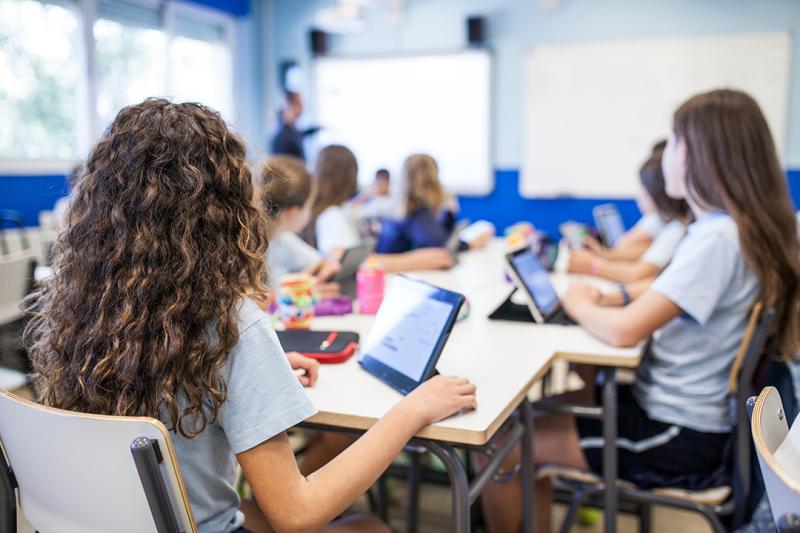How prepared is your school to keep kids safe from bullying?

VU researchers, Associate Professor Nina Van Dyke and Associate Professor Fiona MacDonald, have developed a world-first self-assessment tool to help schools track the effectiveness of their bullying prevention policies.
The tool is now being used across 89% of Victorian schools.
Part of their work with the Alannah and Madeline Foundation, the team asked leaders across Government and Catholic primary and secondary schools how prepared they felt their school was to prevent and respond to bullying and cyberbullying.
Many school staff say they often feel overwhelmed trying to deal with it. Several said that they felt they were making progress before COVID, but since then, things had gotten worse,” Associate Professor Van Dyke said.
Some examples from their research included:
“We had a lot of online bullying going on… a lot of nasty stuff happening online, a lot of sexting, and a lot of horrible comments… We nearly got it wiped out, and then COVID hit, and we then went back to having kids on computers all day, every day, so I think that’s back in a big way,” (Principal, regional secondary college).
Staff also spoke about the difficulty of striking a balance with the use of technology by students.
“We're getting to the point where we're getting Apple Watches, and so we're having to rewrite policy to deal with that. But then, we have kids who are highly anxious who need the support of something like an Apple Watch… where we have to then write caveats for the policy that we have,” (IT Coordinator, Metropolitan primary school).
Associate Professor MacDonald says many schools were crying out for some guidance.
Schools have a legal and ethical responsibility to provide a safe learning environment free from bullying. However, not all schools have systems in place to effectively prevent bullying from occurring or respond to if bullying does occur,” she said.
Using what they learnt from schools and after a review of the Australian and international literature on how schools can best be prepared to prevent and respond to it, the team has developed and tested a self-assessment tool for schools.
The tool helps schools better understand their areas of strengths and weaknesses so they can act to prevent and respond to bullying. It means schools are empowered to take control of their own situation quickly without the need for external action.
As far as we are aware, it is the only tool in Australia or internationally, that allows schools to self-assess their level of preparedness to prevent and respond to in-person bullying, and cyberbullying,” Associate Professor Van Dyke said.
Parent checklist
The tool also gives parents more assurance that schools are being proactive in this space.
Associate Professor Van Dyke and Associate Professor MacDonald suggests parents ask their child’s school these five questions to make sure they’re ready to deal with bullying and cyberbullying:
- Does the school regularly collect, review, and act on data gathered from the entire school community, including students and parents, on social relationships within the school? These should include levels of trust, support, empathy, and kindness between students, and between students and teachers/staff.
- Does the school ask students how the school can better prevent and respond to bullying and cyberbullying, and then consider and act on these suggestions?
- Are all school staff and students trained to identify and immediately report ‘gateway behaviours’? Gateway behaviours are not in and of themselves considered bullying, but when left unchecked, they can escalate into bullying. Examples include posting embarrassing photos online, ignoring, name calling, whispering about people in front of them, eye rolling, etc.
- Does the school ask students whether they believe that students and staff at their school report all or almost all cyberbullying and bullying they observe, and that any reporting of bullying will remain anonymous and be acted on and positively resolved?
- Does the school create and implement ‘safety and comfort plans’? A safety and comfort plan is a plan created for a specific student immediately after they are identified as having been a victim of cyber bullying or bullying to ensure they feel comforted and safe at school. The plan is designed by the student and staff member together.
Background
Bullying continues to affect large numbers of children and young people in Australia. The eSafety Commissioner’s 2020 survey of young people aged 12-17 found that 44 per cent reported having a recent negative online experience including 15 per cent who received threats or abuse online.
A recent report revealed a 40% jump in cyberbullying reports. In 2023, it received 2,383 reports of cyberbullying compared with 1,700 in 2022. Two-thirds (67%) of reports concerned children aged 12–15 years.
Further information
Contact us
Gemma Williams
Media and Communications Manager, Research and Impact
+61 401 664 047 [email protected]


